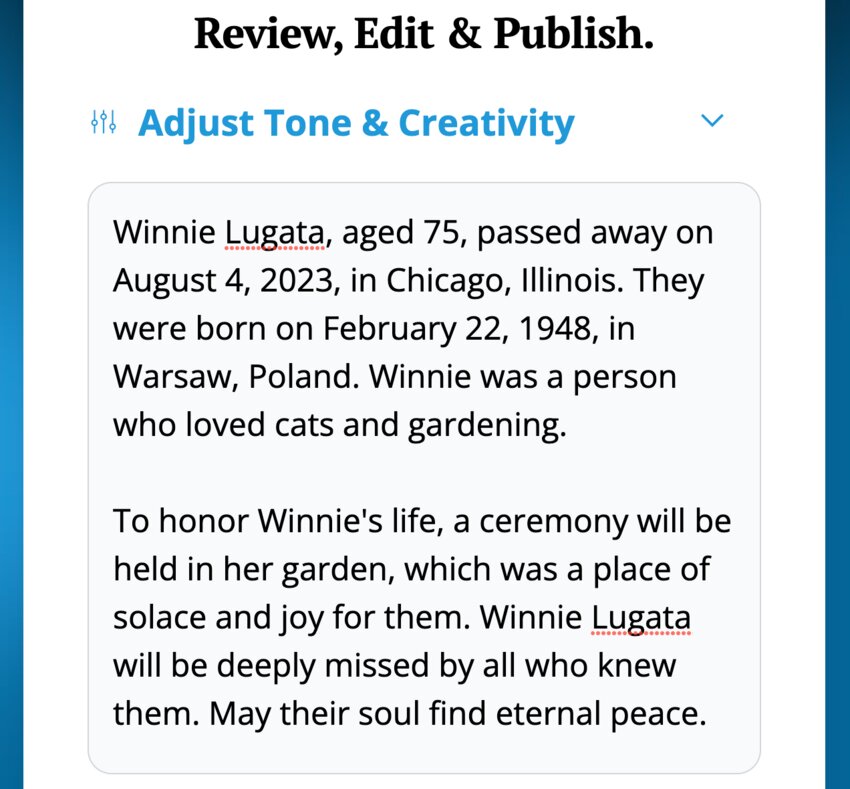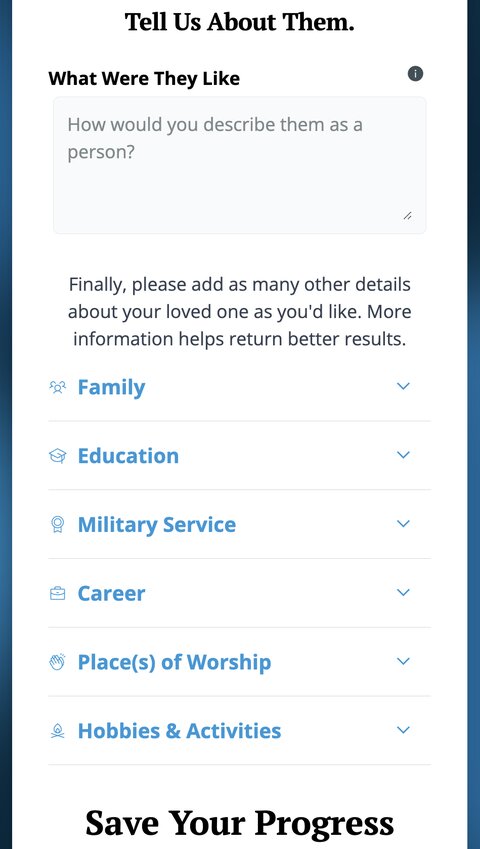Ten developers. Five thousand work hours and counting. Building the first nationwide obituary network focused on consumers takes a dedicated team driven by one goal:
“We want to deliver more obituary orders and more revenue for our newspaper partners,” says Legacy.com Chief Product Officer Antonio Esposito. “We work on that every day, all year long.”
With 61,000 obituaries and $29 million delivered to more than 2,000 newspapers, the investment is paying off. Join us for a rare behind-the-scenes tour of Legacy’s development process.
Make it as easy as possible for consumers to find and complete their purchase. It’s one of the bedrock principles of ecommerce. But with an existing industry infrastructure focused on editorial gatekeeping, roadblocks are inevitable.
“In some markets, it can take users 10 minutes or longer just to find obituary intake information,” says Esposito. “We wanted to decrease frustration and make the process as simple as possible wherever we could.”
Using a variety of developer tools to analyze the user journey, the team reduced a seven-step intake process down to three. Readers noticed. “It’s a very easy process to navigate and use,” said one purchaser. “And that’s essential when doing something like an obituary. That’s difficult enough.”

When a transaction moves to self-serve and online, crystal-clear language becomes critical. So when the team noticed some red flag order issues — high abandoned cart rates and unusual heatmap activity around certain buttons — they immediately suspected user confusion.
There’s one simple way to find out where customers are struggling:
“Ask them,” says Senior Product Manager Spencer Heintz. “It’s always the first step.”
But it’s an approach that many companies today can’t quickly implement. Earlier this year, 74% of chief marketing officers reported large budget cuts. This often dismantles the vital research infrastructure needed to provide fast insights into problems.
To offer the rapid solutions ecommerce demands, Legacy.com maintains an ongoing R&D customer research program. Focus groups, surveys and user interviews are permanently embedded throughout the development process. Utilizing these resources helped pinpoint some areas of user language confusion. “Up until now, most online obit intake platforms were written by and for internal classified staff,” says Esposito. “To everyone else, ‘packages’ are something Amazon drops on your porch. Users didn’t understand what they were getting or how to complete their purchase.”
To help, the team audited all language at every stage of the buyer journey, revising terms that confused consumers. One instantly impactful change: the wording on the all-important obituary placement call to action (CTA) button. The team wanted to more clearly signal to users that clicking the button was “how I get an obituary sent over to the newspaper for publication.” To help, they re-named the button “Submit an Obituary.” Clicks to the link increased 14% as a result.

Purchasers have always cared about their shopping experiences, but the digital generation has a whole new set of high expectations. And they make their feelings clear when it comes time to make an online purchase.
Meeting these demands is why, when other companies have pulled back on direct support, Legacy has expanded its commitment to extended customer service. A 40+ team of experienced agents provides 7-day-a-week phone and email support to purchasers. These staffing levels and experience ensure that technical issues are addressed quickly and user requests are forefront in the development cycle.
“I talk to our customer support team every single day,” says Heintz.
For example, a recent audit of support cases revealed that customers were regularly writing for help resetting and updating passwords. “Who doesn’t hate login issues?” says Director of Product Development Allan Mee. “Especially when it’s for something as personal as an obituary. Did we really need to put this roadblock into their process?”
Now, the entire network is password-free, with the goal of reducing all friction. “We want purchasers to start the process and end with an obituary, without having to stop along the way,” says Mee. The results were instant: a 21% order increase within 10 days.
Synergy: It’s the kind of buzzword you only understand when you see it in action. So let’s take a trip to a product development meeting, where representatives from all teams meet to discuss ways to improve the consumer obituary experience.
“We were brainstorming with support and reviewing customer survey feedback when it hit us,” says Heintz.
“People needed help writing an obituary,” says Pete Matarangas, senior vice president of monetization at Legacy.com. “And we knew we could do something about that.”


For the last decade, Legacy has been quietly investing in research on thoughtful AI, including a prototype obituary content generator. The team took these resources and applied customer support feedback, market research and new developer technologies to create ObitWriter. This cutting-edge tool is now helping more than 200 families a day easily and quickly craft personalized obituaries. With full intake integration, they can easily publish these notices in any newspaper in the network.
“Writing an obituary can be one of the hardest tasks someone undertakes,” says Matarangas. “Make that process easier, and the potential bottom-line impact for our partners is really exciting. If even just one person per week places a notice they otherwise wouldn’t, that’s a huge win for a local paper.”
More notices. More revenue. Do these goals sound familiar?
“We all came together and designed a product that would help readers write longer, better obituaries, so they could publish them with our newspaper partners,” says Mee.
And none of it happened by accident.
“All those insights that make the consumer obituary portal successful — they come from years of infrastructure that we kept building and refining, even when other companies stopped,” says Esposito. “We just wouldn’t have an online consumer intake today without it.”